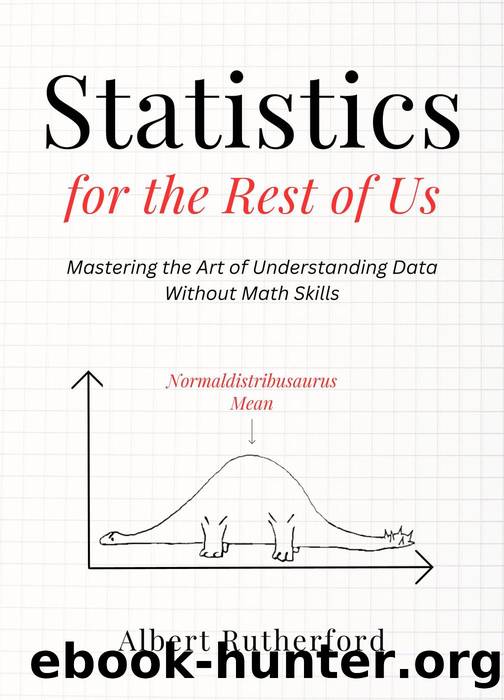Statistics for the Rest of Us by Albert Rutherford

Author:Albert Rutherford
Language: eng
Format: epub
Tags: mathematics, statistical analysis, probability, decision making, analytical skills
Publisher: Albert Rutherford
Published: 2023-04-17T00:00:00+00:00
CHAPTER 7: VISUAL DISPLAYS: TELLING STORIES THROUGH IMAGES
Take a look at the following graph:[xliii]
What do you think the graph shows? What is it trying to tell us? Every graph tells a story, and really good ones make the story both accessible and interesting. According to Mark Nelson, President and CEO of Tableau, "Data storytelling is the ability to distill data down to the insights you want and present those insights as a story.â[xliv] In this chapter, you will learn how to read the story a data display is telling.
In the graph above, we see bus ridership in four major cities between about 2010 (note that the beginning of the x-axis isn't labeled) and 2020. The lines on the graph, each representing a city, increase and decrease a bit, but all four of them decline in that time. All of them, except for Portland, began a sharp decline around 2014 or 2015. So, whatâs the story of this graph? Bus ridership in these four cities has largely declined since 2010.
Data can be displayed in a number of different ways, from graphs to charts to infographics. Each of these ways emphasizes different aspects of the data and affects a viewer differently. The type of data and the conclusions drawn help scientists determine what kind of display to use. Indeed, the wrong type of display, whether accidental or purposeful, can cause viewers to draw conclusions not borne out by the data. In this chapter, we'll break down the most popular kinds of visual displays and what questions to ask yourself when viewing them.
To begin making sense of a visual display of data, you need to look at all of the information provided. Think of the display as a puzzle that you are trying to figure out, and ask yourself the following questions:
â What is the title of the graph?
â If there are axes, what does each axis represent, and what is the scale of each axis?
â Can I pick one data point and figure out what it represents?
â What is the shape of the data? Does it show a certain correlation or trend?
â Is there any additional information on the graph or display? If so, what does it tell me?
â What story is this graph or display telling?
Download
This site does not store any files on its server. We only index and link to content provided by other sites. Please contact the content providers to delete copyright contents if any and email us, we'll remove relevant links or contents immediately.
International Integration of the Brazilian Economy by Elias C. Grivoyannis(99052)
The Radium Girls by Kate Moore(11975)
Turbulence by E. J. Noyes(7980)
Nudge - Improving Decisions about Health, Wealth, and Happiness by Thaler Sunstein(7659)
The Black Swan by Nassim Nicholas Taleb(7058)
Rich Dad Poor Dad by Robert T. Kiyosaki(6514)
Pioneering Portfolio Management by David F. Swensen(6257)
Man-made Catastrophes and Risk Information Concealment by Dmitry Chernov & Didier Sornette(5957)
Zero to One by Peter Thiel(5735)
Secrecy World by Jake Bernstein(4701)
Millionaire: The Philanderer, Gambler, and Duelist Who Invented Modern Finance by Janet Gleeson(4425)
The Age of Surveillance Capitalism by Shoshana Zuboff(4248)
Skin in the Game by Nassim Nicholas Taleb(4205)
Bullshit Jobs by David Graeber(4141)
The Money Culture by Michael Lewis(4135)
Skin in the Game: Hidden Asymmetries in Daily Life by Nassim Nicholas Taleb(3962)
The Dhandho Investor by Mohnish Pabrai(3725)
The Wisdom of Finance by Mihir Desai(3697)
Blockchain Basics by Daniel Drescher(3541)
